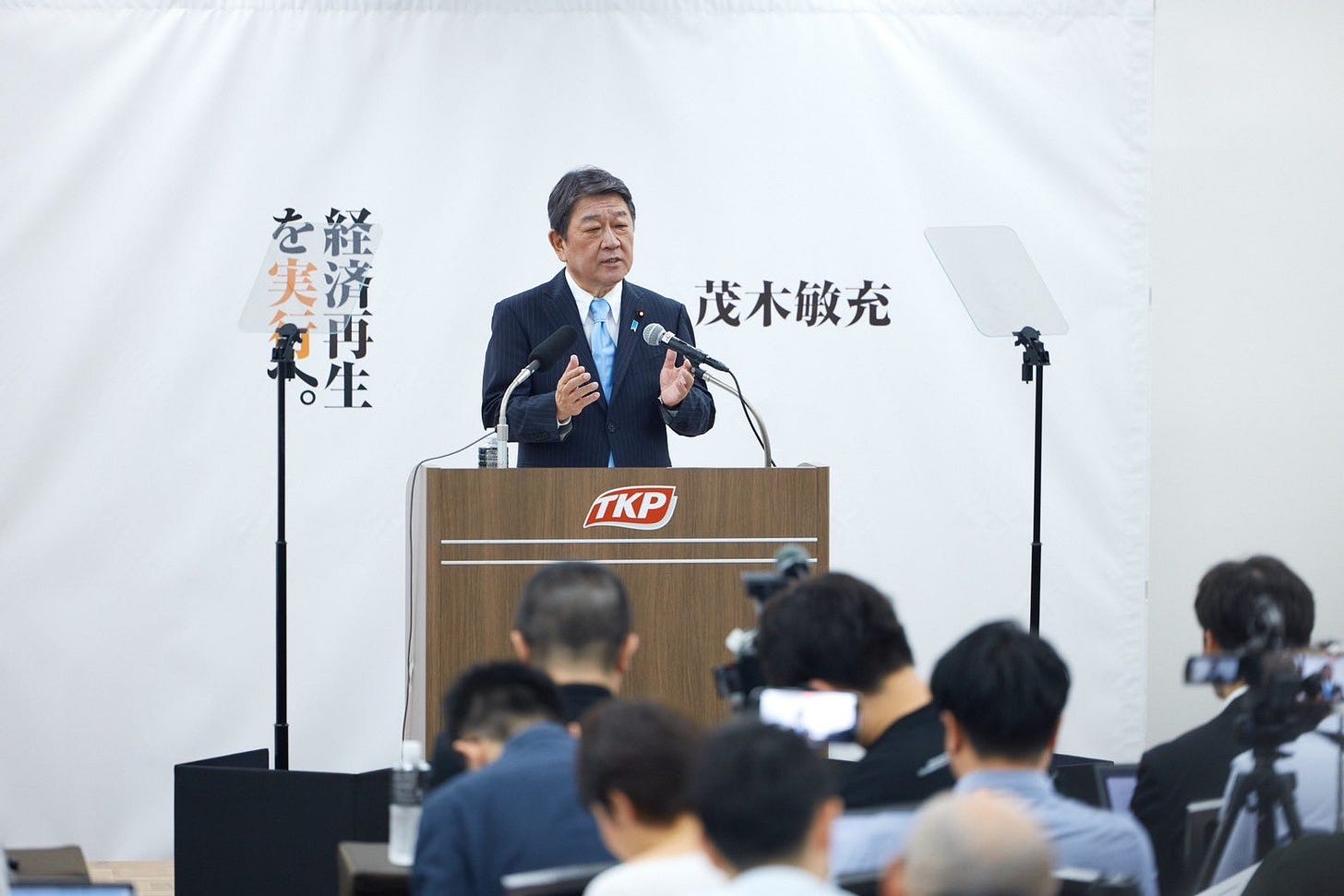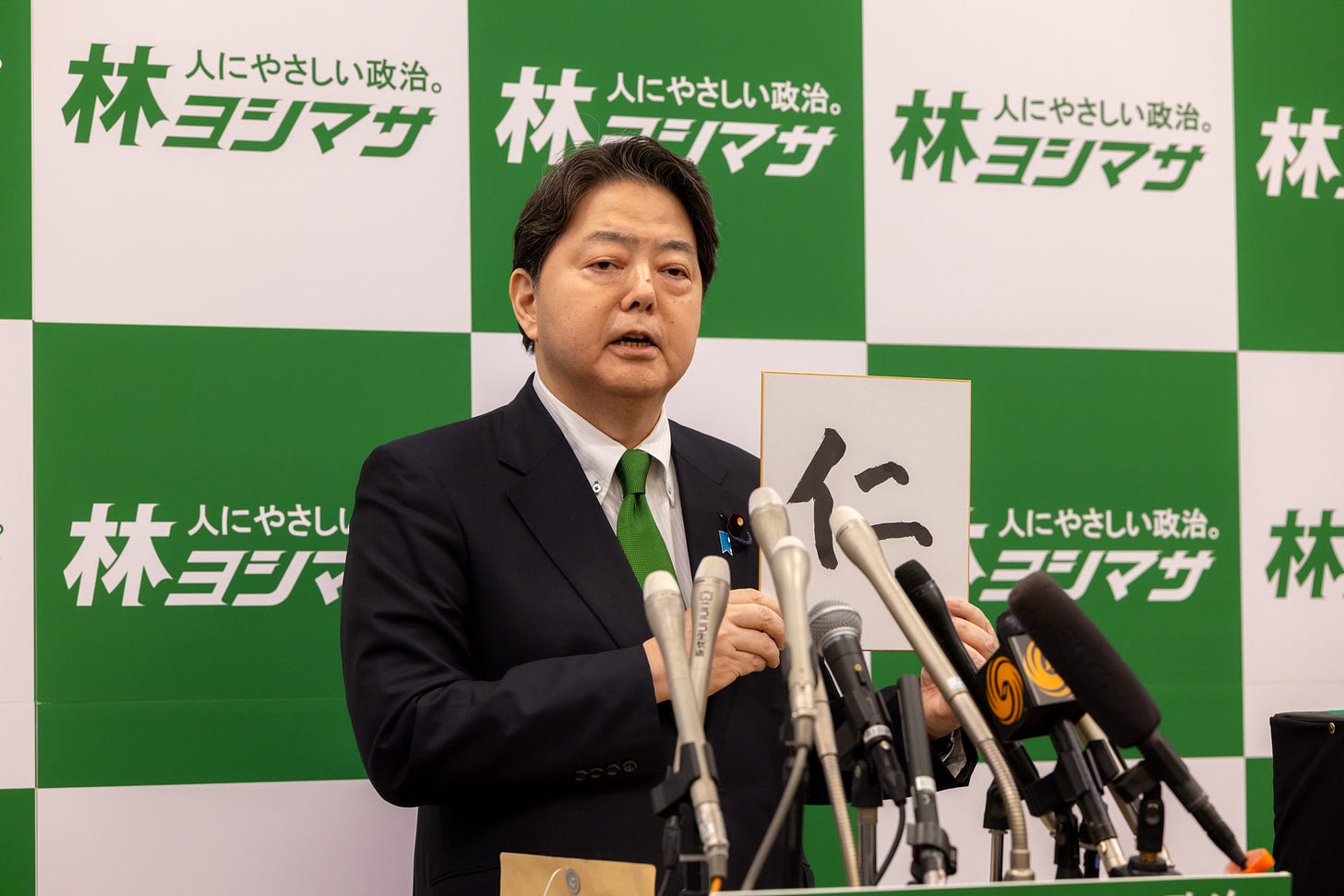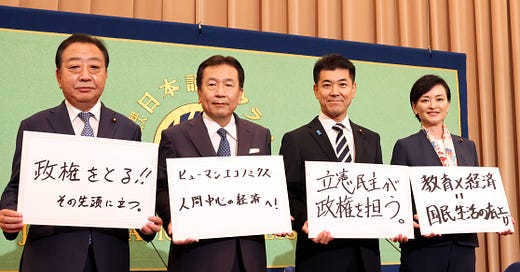"Bring it on" | This week in Japanese politics
The LDP field expands, the CDP race starts, and Kishida takes a final trip to Seoul
Thank you for reading Observing Japan. “This Week in Japanese Politics” is published on Friday or Saturday for paid subscribers.
If you are looking for timely, forward-looking analysis of the stories in Japans’s politics and policymaking that move markets, I have launched a new service through my business, Japan Foresight LLC. For more information about Japan Foresight’s services or for information on how to sign up for a trial or schedule a briefing, please visit our website or reach out to me.
This week I published these posts here at Observing Japan:
“Koizumi gets to work,” 6 September
“The Experienced,” 4 September
Japan Foresight clients received the following notes:
“As the field grows, candidates seek policy distinctions,” 3 September
“Underlying economic weakness remains as LDP transitions from Kishida,” 6 September
My essay on the LDP’s leadership election in the 9.10.24 issue of Newsweek Japan is available here.
The rundown
Three candidates officially joined the Liberal Democratic Party’s (LDP) leadership election, swelling the field to a historically large six candidates, with more joining soon. The Constitutional Democratic Party (CDP) formally began its campaign, with incumbent Izumi Kenta — and first-term lawmaker Yoshida Harumi — joining Edano Yukio and Noda Yoshihiko with little time to spare. Elsewhere in the political system, Kōmeitō will change leaders too, another faction dissolves, and Hyōgo’s governor is running out of time. In economic policy, Prime Minister Kishida Fumio reviewed his government’s record, while data showed that household are not spending much more despite higher incomes. Meanwhile, in foreign policy, Kishida met with South Korean President Yoon Suk Yeol one last time, while Japanese and Australian foreign and defense ministers met in Queenscliff, Victoria. Finally, the LDP candidates are doing a media blitz, Hatoyama Yukio looked back on his premiership, and a Japanese baseball player in the US other than Shohei Ohtani had a historic moment.
LDP leadership election
The LDP field doubled this week, with three candidates formally announcing their candidacies.
The most anticipated was Koizumi Shinjirō, who held a press conference on 6 September announcing that he would seek the LDP’s leadership. Using language reminiscent of his father, the younger Koizumi said he would move quickly to pursue reforms and suggested that if elected, he would call a snap election early in his tenure to win a mandate to move ahead with his program. While Koizumi enters the race as the favorite thanks in part to robust public support, he will likely face attacks that he is too young and inexperienced to lead Japan at this time, as well as questions from other parts of the party (the right wing, for example) about his intentions and priorities.

LDP Secretary-General Motegi Toshimitsu joined the race on 4 September, pledging – in rhetoric reminiscent of the late Abe Shinzō – to realize economic revitalization. He decisively rejected Kishida’s proposals to raise taxes to pay for higher defense spending and other priorities, touted his experience as rendering him the best choice for managing Japan’s foreign relations, and called for new political reforms, including scrapping the use of “policy activity funds.” His opposition to higher taxes to pay for defense spending immediately attracted criticism from across the party, including from the prime minister and Finance Minister Suzuki Shunichi.

Hayashi Yoshimasa, chief cabinet secretary and lieutenant to outgoing Prime Minister Kishida Fumio, entered the race on 3 September. Holding up a placard with the character 仁,1 Hayashi expressed his determination to restore trust in the LDP via more thoroughgoing political reforms, including the creation of a Japanese equivalent to the Federal Election Commission in the United States; seek a balance between growth and fiscal discipline; promote the use of nuclear energy for decarbonization; pursue constitutional revision; and pursue another round of administrative reform to the central government’s twelve ministries. He stressed his lengthy experience in government as preparing him for leadership.
Keep reading with a 7-day free trial
Subscribe to Observing Japan to keep reading this post and get 7 days of free access to the full post archives.




